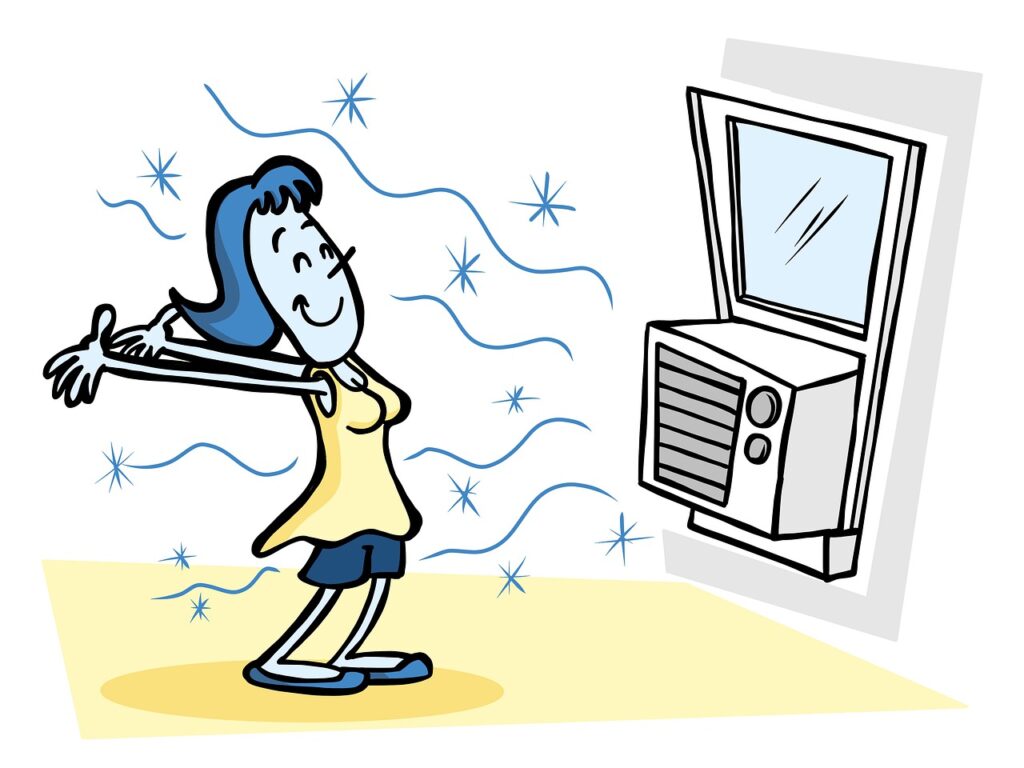Did you know that air conditioning was invented to help dry ink?
In the summer of 1902, The Sackett & Wilhelms Lithographing and Publishing Company plant had just moved into their new building in Brooklyn, New York and the blistering heat was causing a problem. The paper used to print a humor magazine called Judge, absorbed moisture from the moist summer air, causing it to expand, which in turn caused the colors used in the printing process to incorrectly line up. Furthermore, the ink would not properly dry, resulting in publication delays that wreaked havoc with deadlines.
The company enlisted the services of the Buffalo Forge Company who had recently hired a fledgling engineer named Willis Haviland Carrier who had just graduated in 1901 from Cornell University With a Bachelor of Science In Engineering.
As the story goes, Carrier was walking through a Pittsburgh, Pennsylvania rail station one foggy morning and had an epiphany. He realized that he could reduce humidity in the air by creating an “artificial” fog.
Carrier conducted experiments and devised a method to control humidity utilizing cooling coils.
Initially, the idea was to force air across pipes filled with cool well water, and later added a refrigeration machine or “chiller” to improve the process.
His invention performed the following functions: controlling temperature, controlling humidity, providing ventilation and air circulation, and cleaning the air.
The equipment was put into operation on July 17th, 1902, thus marking the birth of modern air conditioning. The New York Stock Exchange purchased Carrier’s machine and became the first commercial building to use air conditioning for the comfort of its occupants.
After four years of refining his invention, Carrier was granted U.S. Patent 808,897 on January 2, 1906, for an “Apparatus for Treating Air,” which could either dehumidify or humidify air.
Carrier later created the Carrier Air Humidifier in 1913 designed to humidify the air in a single room.
Willis Carrier subsequently left the Buffalo Forge Company and along with a group of fellow engineers, pooled their collective life savings of $32,600 and formed the Carrier Engineering Corporation in New York on June 26, 1915.
Early cooling systems used in theaters were basically modified heating systems using refrigeration equipment to distribute cold air through floor vents. Unfortunately, there were some such as hot, muggy air in upper levels and significantly colder temperatures at lower levels. patrons would often wrap their feet with newspapers in order to stay warm.
Carrier Engineering Corporation installed the first properly functioning cooling system for theaters at the Metropolitan Theater in Los Angeles, California in 1922. This vastly improved product pumped cool air through higher vents which resulted in better humidity and temperature control throughout the building.
Carrier publicly introduced a novel system in May 1922, at the Rivoli Theater in New York City that used a centrifugal chiller, containing fewer moving parts and compressor stages than existing systems. Carrier’s new system was more reliable and cost less than other products. The result was the proliferation of air conditioning in public buildings across the nation.
Air conditioning systems for private dwellings was too large and too expensive until Frigidaire introduced a system 1929 that was small enough for residential use shaped like a radio cabinet
However, it was expensive, heavy, and required a separate, remotely controlled condensing unit. General Electric developed a self-contained room cooler, producing 32 prototype models from 1930 to 1931.
Home air conditioners became smaller after H.H. Schultz and J.Q. Sherman filed a patent for a unit that could be placed in a window. The air containers were introduced in 1932 but due to their price, never became popular.
Henry Galson, an engineer who has been called “ the Henry Ford of air conditioning,” developed a cheaper, more compact window air conditioner. These new, smaller, more affordable units were a hit with consumers and by 1947, 43,000 units had been sold. By the late 1960s central the price of air conditioners fell dramatically. Today, according to the Department of Energy, 90 percent of homes in the U.S. have air conditioning.
The Sackett & Wilhelms building became the headquarters of the International Studio and Curatorial Program, with 100 foreign artists and curators residing there.
In an ironic twist of fate, the building has no central air conditioning and a few window units do little to cool the building.











